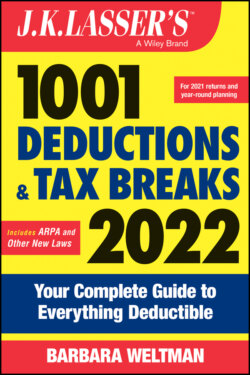Читать книгу J.K. Lasser's 1001 Deductions and Tax Breaks 2022 - Barbara Weltman - Страница 18
Qualifying Child
ОглавлениеThe following is a brief explanation of a qualifying child and a qualifying relative (someone who is not a qualifying child):
A qualifying child must meet all of the following conditions:
Relationship test: The child must be your son or daughter (natural, adopted, step, and in some cases foster) or a descendant of your sibling (e.g., niece or nephew).
Age test: The child must be younger than you and either younger than 19 years old, be a “student” younger than 24 years old as of the end of the calendar year, or any age but permanently and totally disabled.
Residency test: The child must live with you in the United States for more than half the year (special rules for noncustodial parents are explained later).
Joint return test: The child cannot file a joint return unless doing so to claim a tax refund.
Support test: The child does not provide more than half of his or her own support.
Multiple people claiming the child as a dependent. Where one parent has physical custody of the child, he or she can waive treating the child as a dependent to permit the noncustodial parent to do so. The waiver (annually or permanently) is made on Form 8332, Release/Revocation of Release of Claim to Exemption for Child by Custodial Parent. The form applies to some benefits (e.g., child tax credit) but not for other benefits (e.g., earned income tax credit, dependent care credit, head of household status).
Where 2 people are eligible to treat the child as a dependent, a “tie breaker rule” comes into play. Generally, the person with greater physical custody (determined by counting the nights that the child spends with each person) is determinative. However, when there's an even split, other rules are used to decide which person can treat the child as a dependent.
